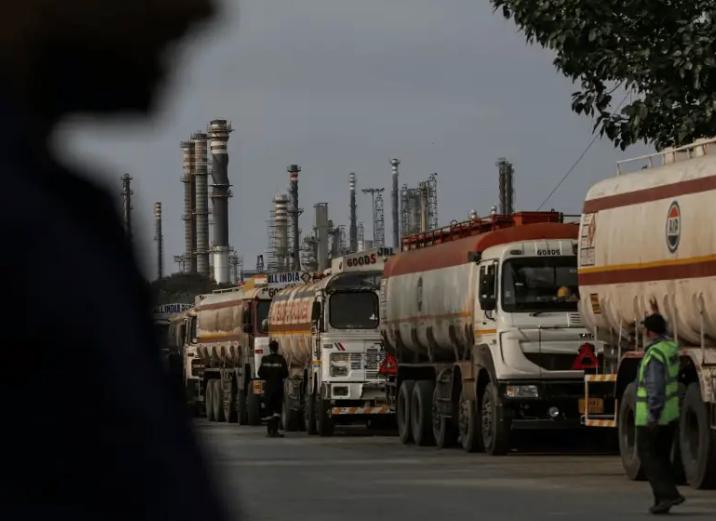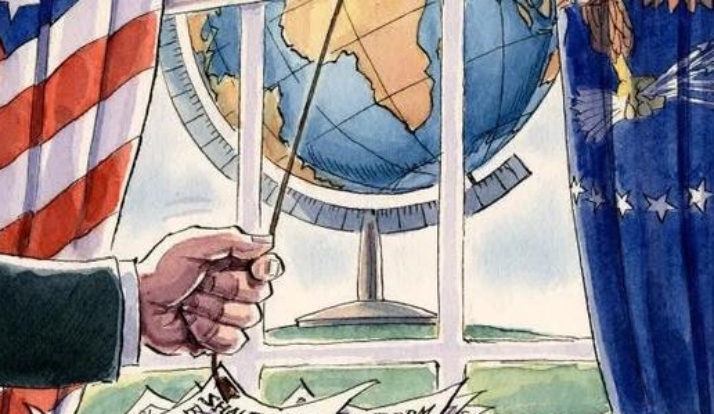
Earlier this month, US President Trump signed an executive order, citing India's continuous purchase of Russian oil as the reason, to impose an additional 25% tariff on Indian goods on top of the existing 25% tariff, raising the total tax rate to 50%, which is much higher than the tariffs imposed by the US on other Asian-Pacific countries. The first 25% tariff took effect on August 7th, while the additional 25% tariff will come into effect 21 days after the executive order is announced. On August 25th local time, the US Department of Homeland Security issued a notice stating that it plans to impose a 50% tariff on Indian goods starting from 0:00 on August 27th. The notice pointed out that the tariffs will apply to "all imported goods for consumption or for extraction for consumption in storage". In response, the Indian side stated that the US's practice of imposing tariffs on India was "unfair, unjust, and unreasonable". On August 25th local time, Indian Prime Minister Modi delivered a tough speech at a rally, stating that he would support small entrepreneurs and farmers. He said, "My government will never allow small entrepreneurs, farmers, and animal breeders to suffer any harm. No matter how much pressure there is, we will continuously strengthen our strength to resist challenges."
Trump had previously threatened to impose secondary sanctions on countries that purchase Russian energy, and India became the first country to face "secondary tariffs" from the US due to its purchase of Russian oil. This move by the Trump administration to impose a 50% tariff on India has had a significant impact and far-reaching influence on both the trade and business sectors. Firstly, it has an impact on Indian business. American customers have canceled a large number of orders due to the soaring tariff costs (from 25% to 50%). For example, Rahul Mehta, a member of the Indian Garment Manufacturers Association, said that the US market accounts for about one-third of India's garment exports, and the tariff shock could lead to a 2.5-3 billion to 3 billion US dollar decline in garment exports. Indian jeweler Kotwal disclosed that 90% of the diamond-encrusted jewelry sold by enterprises goes to the US, with a profit margin of only 3%-4%. The 50% tariff will make them lose competitiveness in the US market. At the same time, India's exports of jewelry to the US reached 9 billion US dollars, and the proportion of textile exports was high, but the 50% tariff made the profit margin zero, and enterprises might be forced to exit the US market. India supplies about 65% of generic drugs to the US, and if not granted tariff exemptions, it will lose its position as the largest generic drug market, affecting the stability of the medical supply chain. Competitors such as Sri Lanka seized market share due to tariff advantages, and India's industrial competitiveness declined. The US trade deficit with India reached 45.7 billion US dollars, and the tariffs may further expand India's current account deficit and intensify the pressure on the rupee. Moody's predicted that if the tariffs continue, India's GDP growth rate in the fiscal year 2026 could lose 0.3-0.6 percentage points (from 6.3% to 5.7%-6%).
Secondly, it has an impact on the US market. US importers may pass the tariff costs on to consumers, causing the prices of Indian goods (such as textiles, medicines, and jewelry) to rise, affecting the purchasing power of low-income groups. India is an important supplier of electronics and auto parts to the US, and tariffs may cause supply chain disruptions, pushing up the production costs of US enterprises. Indian generic drugs account for more than 40% of the US market, and tariffs may cause a shortage of drug supplies, affecting the stability of the medical system. Tariffs are transmitted to the US inflation through the increase in the prices of imported goods, which may force the Federal Reserve to maintain high interest rates and curb economic growth.
Thirdly, it has an impact on global trade. The US, bypassing WTO rules and unilaterally imposing tariffs, has damaged the multilateral trading system and may prompt other countries to follow suit, intensifying global trade protectionism. The US pressured India to stop importing Russian oil by imposing tariffs, but India insisted on energy security first, which may accelerate "de-dollarization" and the strategy of trade diversification. The two sides have moved from "natural allies" to open confrontation, affecting cooperation in defense and technology fields, and weakening the cohesion of the Indo-Pacific strategy.
In conclusion, the Trump administration's plan to impose a 50% tariff on Indian goods has caused a huge stir in the business sector. Although there are potential areas for compromise such as tariff exemptions and investment agreements, the differences in core interests between the US and India are unlikely to be resolved in the short term. Uncertainties in the business field will persist, and relevant enterprises need to closely monitor the development of the situation and actively adjust their strategies to cope with risks.

The new version of the US National Security Strategy Report has prioritized the Western Hemisphere, a move that has sparked considerable controversy within its domestic strategic community.
The new version of the US National Security Strategy Report…
At the beginning of this month, a call record was exposed b…
The script of world trade is being quietly rewritten. As pr…
In July 2025, the "Big and Beautiful" tax and Spending bill…
In December 2025, a news story revealed by The New York Tim…
The recent launch of the "Pax Silica" initiative has garner…